Welcome back to the Wonderful World 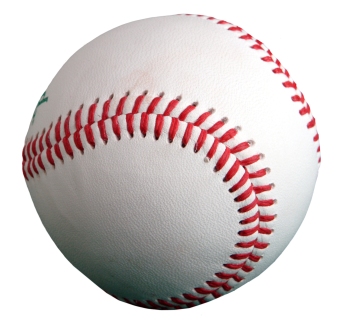 of Weed Man! This week we will be wrapping up our lawn disease series. If you have run into lawn diseases this is a great resource to help identify and rectify what may be going on in your lawn. This final week, we are going to talk about Red Thread on the Green – unfortunately I’m not talking about baseball. We are going to uncover the details about the lawn disease Red Thread.
of Weed Man! This week we will be wrapping up our lawn disease series. If you have run into lawn diseases this is a great resource to help identify and rectify what may be going on in your lawn. This final week, we are going to talk about Red Thread on the Green – unfortunately I’m not talking about baseball. We are going to uncover the details about the lawn disease Red Thread.
Red thread is a disease that shows up in lawns that are cut at a taller height during cooler times of the year such as spring or fall. Although it is not what you want to see in your lawn, it is not life threatening to the grass plant. Red thread will generally only affect the blades of the grass plant – roots and crowns are not 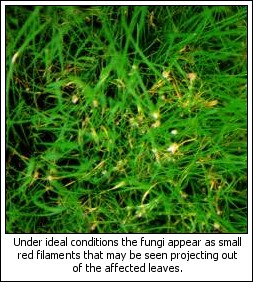 infected by the disease which means the plant can eventually overcome the disease. In rare cases, the disease can get out of control or is a very severe case, the plant can die.
infected by the disease which means the plant can eventually overcome the disease. In rare cases, the disease can get out of control or is a very severe case, the plant can die.
This lawn disease will typically develop, as mentioned before, during cooler parts of the year. Usually when temperatures are in the 40-70-degree range, and when there is a higher moisture level present on the lawn. Although rare, healthy lawns can get this disease as well. However, red thread will show up most often on lawns that have been poorly maintained. Red thread, like many other fungal diseases, can be spread on the lawn by foot traffic or lawn equipment.
Small spots will begin to appear on your lawn – they can begin as straw colored, light pink, or reddish patches. They will be about the size of a silver dollar but can grow to be anywhere from 4” to 2’ in diameter. Red Th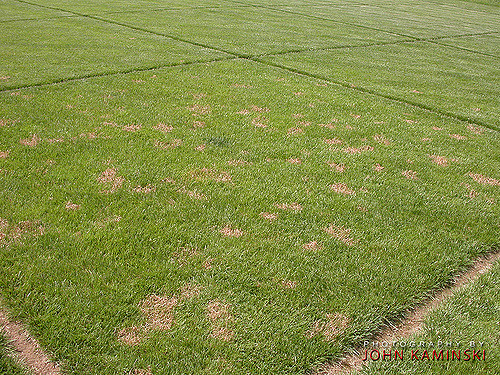 read is most easily identified in its later stages when you can see red threadlike hairs or strings attached to the grass. There are other lawn diseases that will look similar, such as dollar spot, pink snow mold, or pink patch. Pink patch is probably the most commonly mistaken, as they are similar in color and appearance. However Pink patch looks like the grass has cotton candy on it, vs red thread has pink or read threads on it.
read is most easily identified in its later stages when you can see red threadlike hairs or strings attached to the grass. There are other lawn diseases that will look similar, such as dollar spot, pink snow mold, or pink patch. Pink patch is probably the most commonly mistaken, as they are similar in color and appearance. However Pink patch looks like the grass has cotton candy on it, vs red thread has pink or read threads on it.
So, what do you do when you discover this strange disease on your lawn? Once discovered in your lawn, there are some easy steps to clear up the disease:
- Implement recommended watering habits – deep and infrequently
- Keep a high mowing height to promote a healthier root system that can withstand disease better
- Reduce the amount of shade by trimming trees and shrubs that contribute to the shady areas
- Increase the air circulation by thinning trees and shrubs or making appropriate changes to landscaping to promote air flow in area affected
- Provide a light application of fertilizer to help promote recovery
- Reduce thatch with core aeration
- There are fungicides that can be applied to help recover, however they can be very cost prohibitive to do.
Although there are chemicals that can help control fungus in the lawn, we generally do not recommend it. There is a time and place for use of chemical treatment, but too often homeowners just want a quick fix. Many times, chemical control for fungus treats the symptoms and not the underlying cause. Chemical control can get very expensive as it needs applied consistently and often to work. If you make the necessary changes to your cultural practices it will improve on its own.
If you are seeing red thread, or any other lawn disease in your lawn, and need some help with it, don’t hesitate to call the Weed Man! 208-888-9911 www.weedmanboise.com #wecareforyourlawn
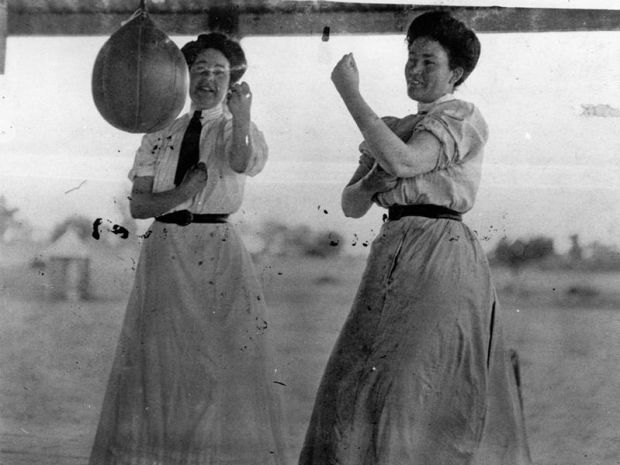



 light yellow spots or flecks on the grass blade. The spots will enlarge over time and create little spores that appear as orange-yellowish powder. It looks very similar to actual rust that you might see on oxidized metal. Hence the name ‘Rust.’ Walking through grass with significant amounts of infection will disturb and release the spores within these pustules and leave a distinct orange color on one’s shoes. These spores, carried by the wind or equipment, spread the disease to other areas during the growing season.
light yellow spots or flecks on the grass blade. The spots will enlarge over time and create little spores that appear as orange-yellowish powder. It looks very similar to actual rust that you might see on oxidized metal. Hence the name ‘Rust.’ Walking through grass with significant amounts of infection will disturb and release the spores within these pustules and leave a distinct orange color on one’s shoes. These spores, carried by the wind or equipment, spread the disease to other areas during the growing season.
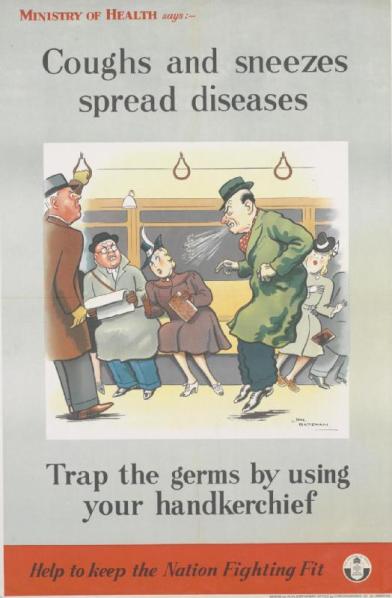

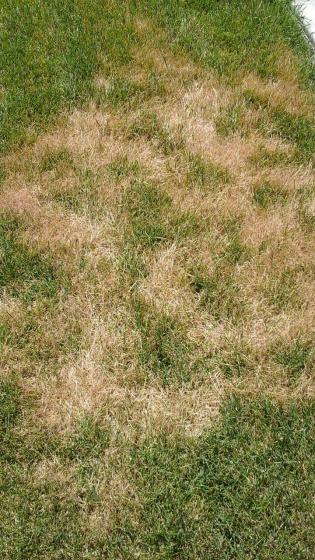 away from being classified as a desert we generally wouldn’t see many of these types of fungus grow naturally in our area. A homeowner’s unfamiliarity with proper watering and mowing techniques, or general lawn care, will not cause the disease. However, it can create the exact environment needed for a disease to thrive! Even in a desert climate, the spores of the fungus are present. Stuck in the soil, waiting patiently for the perfect storm of conditions to culminate so it can flourish. Millions of them. Just there. Part of nature. Waiting.
away from being classified as a desert we generally wouldn’t see many of these types of fungus grow naturally in our area. A homeowner’s unfamiliarity with proper watering and mowing techniques, or general lawn care, will not cause the disease. However, it can create the exact environment needed for a disease to thrive! Even in a desert climate, the spores of the fungus are present. Stuck in the soil, waiting patiently for the perfect storm of conditions to culminate so it can flourish. Millions of them. Just there. Part of nature. Waiting.